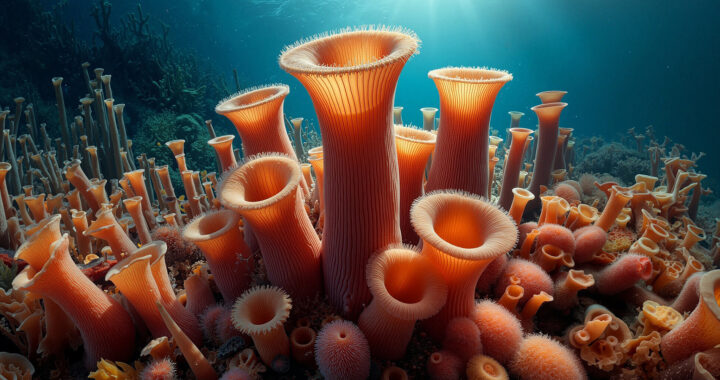Researchers from the Massachusetts Institute of Technology, led by geobiologist Roger Summons, have presented new molecular evidence indicating that marine sponges may have been among the first animals on Earth. Their findings were published on 30 September 2025 following more than a decade of geochemical analysis.
The theoretical basis of their research was molecular paleontology. This subset of paleontology studies chemical traces rather than body fossils. Soft-bodied organisms such as early sponges rarely left traditional fossil remains during the Ediacaran Period. Note that this period started at the end of the Neoproterozoic Era about 635 million to 541 million years ago.
Nevertheless, instead of skeletal fragments, the research team focused on chemical fossils known as steranes. These are stable molecules that form when biological sterols degrade under geological conditions. Modern animals produce sterols containing 27 carbon atoms, while certain marine sponges synthesize sterols containing 30 to 31 carbon atoms.
The researchers originally discovered 30-carbon steranes in 2009 within Ediacaran-age rocks from Oman. However, significant debate followed regarding alternative origins. Some experts argued that geological reactions or contamination might have produced similar molecular signatures without any biological activity from early metazoans.
Sampling was expanded to additional locations to strengthen the hypothesis and give credence to the research. Sedimentary rock samples were collected from Oman, western India, and Siberia. The samples also contained abundant 30-carbon steranes, but more importantly, also revealed unexpectedly high quantities of 31-carbon steranes.
Modern sponge specimens were then examined to determine whether these living demosponges synthesize identical sterols. Laboratory analysis confirmed that certain extant species produce 31-carbon sterols capable of degrading into sterane forms matching those preserved within the collected ancient rock samples. This is an interesting finding.
Furthermore, to exclude nonbiological sources, the team synthesized 8 different 31-carbon sterols in controlled laboratory settings. These synthetic compounds were subjected to heat and pressure treatments simulating long-term sediment burial. Only two yielded degradation products identical to the ancient steranes detected in geological samples.
The convergence of field data, biological comparison, and lab simulation led the researchers to conclude that sponge-like organisms inhabited marine environments before the beginning of the Cambrian Period, roughly 541 million years ago. This places early metazoan evolution significantly earlier than previously verified fossil records.
Nevertheless, if confirmed further through expanded sampling, this discovery would shift the timeline of animal evolution by several million years. It would also suggest that the planet first hosted filter-feeding organisms with simple cellular structures rather than complex bilaterian organisms with sophisticated mobility and sensory systems.
FURTHER READING AND REFERENCE
- Shawar, L., Love, G. D., Uveges, B. T., Zumberge, J. A., Cárdenas, P., Giner, J.-L., and Summons, R. E. 2025. “Chemical Characterization of C 31 Sterols from Sponges and Neoproterozoic Fossil Sterane Counterparts.” Proceedings of the National Academy of Sciences. 122(41). DOI: 1073/pnas.2503009122





